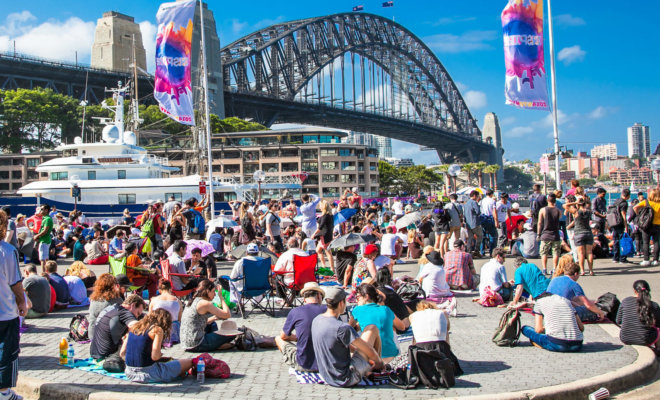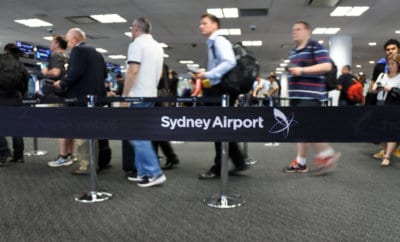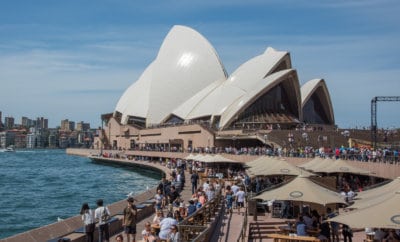Education
International Students Living in Overcrowded, Illegal Accommodation in Australia

People near Harbour bridge in Sydney, Australia. (Representational Image)
Photo: Bigstock
Affordability and students' lack of awareness of tenancy laws in Australia are among factors encouraging cramped accommodation foe young immigrants.
With a 12.6 per cent rise in international student population from 2016 in the past year, Australia is looking at an accommodation crisis where international students, especially Asian migrants, are forced to live in exploitative and illegal arrangements, the Guardian Australia reported.
The number of people living in severely crowded dwellings jumped to 74 per cent in the five-year run up to 2016, as per the ABS data released this month. Migrants occupied almost half of the population living in overcrowded houses in 2016, at 47 per cent, a stark jump from 31 per cent five years before. In this migrant group, the people coming from India, China, Afghanistan and Pakistan make up half, with age groups of 19-24 years and 25-34 years dominating the demographic.
The lack of affordable housing puts enormous pressure on students, who, under the terms of their visa can do 40 hours of paid work in two weeks. There is systemic workplace exploitation of international students and backpackers, where a third of backpackers and a quarter of international students are paid $12 an hour or less, Guardian had reported earlier. That is about half the minimum wage.
Dozens of advertisements for cramped accommodation have been put up on classified sites like Gumtree over the past months and even on the site Weibo, which targeted Chinese students, according to the SBS News. A one-bedroom apartment in Sydney’s Clarence Street being leased out for $645 a week was put up on Gumtree as a house for eight people, the report said, adding that four people slept in the living room, with beds partitioned by curtains and cardboard. The bedroom had bunk beds to accommodate four people. The property manager of this apartment told the publication that he was not aware it was “(being) sublet”. He added that “overcrowding” was not uncommon in the city.
“It’s just the nature of that market in the central business district where it does happen because you’ve got groups of people from overseas, Asian countries and the rest, that’s how they do it back home and it could happen here as well,” he was quoted as saying.
A Nepalese student was quoted as saying by the Guardian that photos put up by Gumtree are not accurate representations of the place.
Affordability is the main issue for international students, Leo Patterson Ross from the Tenants Union New South Wales told SBS News. “There aren’t individual rooms that are affordable to students and that means they often accept substandard or different kind of living arrangements to be able to afford homes close to their uni or near their work.”
He added that students were particularly “vulnerable” because they do not have a strong sense of tenancy laws – including that overcrowded units may be illegal. In New South Wales, if the house provides beds for a fee to five or more, it should be registered as a boarding house.
A City of Sydney spokesman told the SBS News the city takes overcrowded accommodation “very seriously as it can present fire and safety risks for occupants.” The issue of overcrowding, after all, first came into limelight in 2012 when two Chinese students jumped off the fifth floor of a building that did not meet fire safety regulations. The City of Sydney set up a special task-force in 2015, which found highly organized networks of unofficial boarding houses targeting international students.


